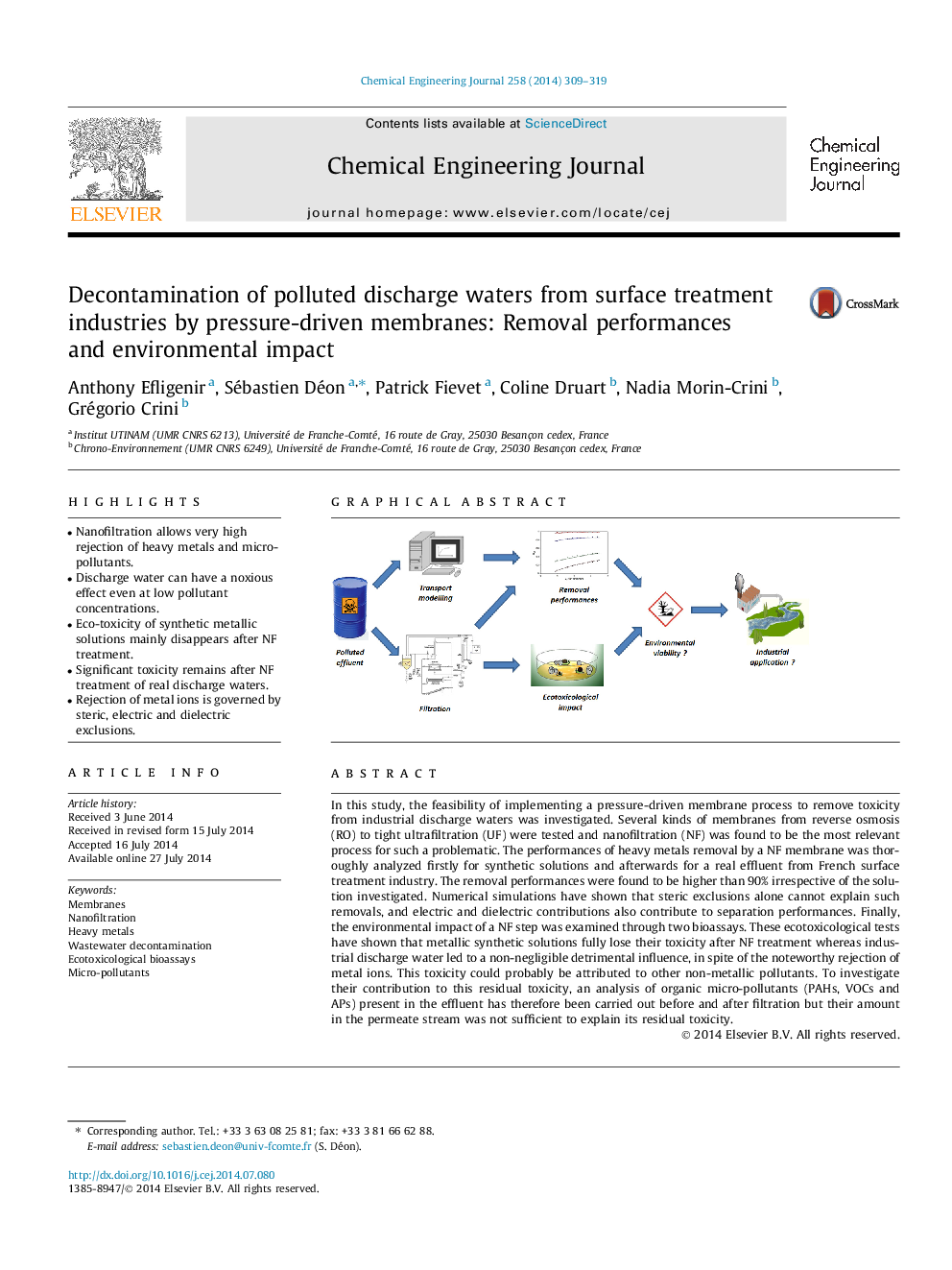| کد مقاله | کد نشریه | سال انتشار | مقاله انگلیسی | نسخه تمام متن |
|---|---|---|---|---|
| 146951 | 456383 | 2014 | 11 صفحه PDF | دانلود رایگان |
• Nanofiltration allows very high rejection of heavy metals and micro-pollutants.
• Discharge water can have a noxious effect even at low pollutant concentrations.
• Eco-toxicity of synthetic metallic solutions mainly disappears after NF treatment.
• Significant toxicity remains after NF treatment of real discharge waters.
• Rejection of metal ions is governed by steric, electric and dielectric exclusions.
In this study, the feasibility of implementing a pressure-driven membrane process to remove toxicity from industrial discharge waters was investigated. Several kinds of membranes from reverse osmosis (RO) to tight ultrafiltration (UF) were tested and nanofiltration (NF) was found to be the most relevant process for such a problematic. The performances of heavy metals removal by a NF membrane was thoroughly analyzed firstly for synthetic solutions and afterwards for a real effluent from French surface treatment industry. The removal performances were found to be higher than 90% irrespective of the solution investigated. Numerical simulations have shown that steric exclusions alone cannot explain such removals, and electric and dielectric contributions also contribute to separation performances. Finally, the environmental impact of a NF step was examined through two bioassays. These ecotoxicological tests have shown that metallic synthetic solutions fully lose their toxicity after NF treatment whereas industrial discharge water led to a non-negligible detrimental influence, in spite of the noteworthy rejection of metal ions. This toxicity could probably be attributed to other non-metallic pollutants. To investigate their contribution to this residual toxicity, an analysis of organic micro-pollutants (PAHs, VOCs and APs) present in the effluent has therefore been carried out before and after filtration but their amount in the permeate stream was not sufficient to explain its residual toxicity.
Figure optionsDownload as PowerPoint slide
Journal: Chemical Engineering Journal - Volume 258, 15 December 2014, Pages 309–319
